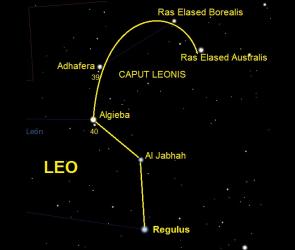Rapidly rotating stars emit polarised light - Indian prediction found correct!
Q. Which Indian astrophysicist and Nobel laureate predicted rapidly rotating stars emit polarised light?- Published on 20 Sep 17a. Subrahmanyan Chandrasekhar
b. CV Raman
c. Ramanujan
d. Amartya Sen
ANSWER: Subrahmanyan Chandrasekhar

Over 70 years after Indian astrophysicist and Nobel laureate Subrahmanyan Chandrasekhar predicted that rapidly rotating stars would emit polarised light, scientists in Australia have observed the phenomenon for the first time.
Researchers used a highly sensitive piece of equipment to detect the polarised light from Regulus, one of the brightest stars in the night sky.
The equipment provided unprecedented insights into the star, which is in the constellation Leo, allowing the scientists to determine its rate of spinning and the orientation in space of the star’s spin axis.
Regulus is rotating so quickly it is close to flying apart, with a spin rate of 96.5 per cent of the angular velocity for break-up.
It is spinning at approximately 320 kilometres per second - equivalent to travelling from Sydney to Canberra in less than a second.
Chandrashekar's Prediction: Know More- In 1946, Chandrasekhar had predicted the emission of polarised light from the edges of stars, prompting the development of sensitive instruments called stellar polarimeters to try to detect this effect.
- Optical polarisation is a measure of the orientation of the oscillations of a light beam to its direction of travel.
- In 1968, other researchers built on Chandrasekhar’s work to predict that the distorted, or squashed, shape of a rapidly rotating star would lead to the emission of polarised light, but its detection has eluded astronomers until now.
- The instrument built, the High Precision Polarimetric Instrument (HIPPI) is the world’s most sensitive astronomical polarimeter.
- Its high precision has allowed scientists to detect polarised light from a rapidly spinning star for the first time
- It has previously been extremely difficult to measure these properties of rapidly rotating stars, researchers said.
- Yet the information is crucial for understanding the life cycles of most of the hottest and largest stars in the galaxies, which are the ones that produce the heaviest elements, such as iron and nickel, in interstellar space.
Regulus: Know More- Regulus is about 79 light years away.
- Regulus, also designated Alpha Leonis, is the brightest star in the constellation of Leo and one of the brightest stars in the night sky, lying approximately 79 light years from the Sun.
- Constellation: Leo
- B - V color index: –0.11/+0.86
- U - B color index: –0.36/+0.51
- Apparent magnitude (V): 1.40/8.13/13.50
- Absolute magnitude (MV): –0.52/6.3/11.6
- Age: ≳ Polarised light emitted by 1 Gyr
- During the total solar eclipse in the US in August, Regulus was just one degree away from the Sun.
- It was, to many people, the only star visible during the eclipse.